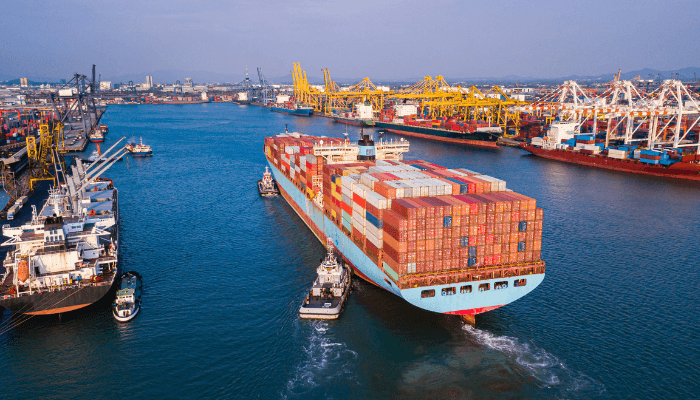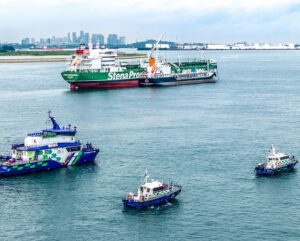In Response to Media Queries on Vessels’ Extended Waiting Times for Berths in the Port of Singapore

The diversion of vessels around the Cape of Good Hope has caused disruptions in vessel arrival schedules at major ports globally, leading to off-schedule arrivals and a “vessel bunching” effect. Since the beginning of 2024, Singapore has experienced a significant increase in vessel arrivals.
For tanker and bulk vessels, resupply and bunkering activities within the anchorages remain unaffected. However, container vessels have seen a large increase in volumes and a “bunching” of arrivals over the past few months due to supply chain disruptions upstream.
From January to April 2024, Singapore handled 13.36 million twenty-foot equivalent units (TEUs) of containers, an 8.8% increase over the same period last year. The rise in off-schedule arrivals and increased container volumes have resulted in longer wait times for container berths. While most container vessels are berthed upon arrival, PSA has worked with liners to adjust schedules where possible. If adjustment is not feasible, the average waiting time is about two to three days.

The increased demand for container handling in Singapore is partly due to container lines discharging more containers in Singapore to catch up on their schedules, leading to more containers being handled per vessel. Additionally, container lines are leveraging PSA’s cargo handling capabilities to manage container stowage for faster discharge at subsequent ports. This reflects the confidence container liners have in Singapore’s port.
The Ministry of Transport (MOT) and the Maritime and Port Authority of Singapore (MPA) have been collaborating with PSA and the industry since late 2023 to prepare for higher vessel arrivals. PSA has increased manpower and handling capacity, reactivating older berths and yards at Keppel Terminal. As a result, PSA has increased its weekly container handling capacity from 770,000 TEUs to 820,000 TEUs.
Furthermore, three new berths at Tuas Port will commence operations later this year, increasing overall port handling capacity. PSA plans to expedite the commissioning of these berths to enhance container handling capacity in the near term. MPA and PSA are closely working with container lines and regional feeders to inform them about berth availability and advise on arrival times to minimize berthing delays.
Other vessel types, accounting for about two-thirds of arrivals, do not experience delayed berthing, and there is no crowding in the anchorages.
MOT and MPA will continue to collaborate with PSA to optimize port capabilities and capacity, aiming to minimize berth wait times through proactive planning with container lines regarding their arrival times and berth availability.
